THE STING (1973)
A novice con man teams up with an acknowledged master to avenge the murder of a mutual friend by pulling off the ultimate big con and swindling a fortune from a big-time mobster.

A novice con man teams up with an acknowledged master to avenge the murder of a mutual friend by pulling off the ultimate big con and swindling a fortune from a big-time mobster.


As the piano plays the familiar notes of Scott Joplin’s ragtime classic “The Entertainer,” painted title cards unveil the cast, the exquisite anachronism transporting you back to the era of 1930s American nickelodeons. There, amidst the Great Depression, you’d immerse yourself in the escapism of cinema, then hop across the street to catch some vaudeville entertainment. Such is the deft craftsmanship of George Roy Hill’s The Sting—much like the intricate con it depicts, every element fits perfectly.
Set in 1936, Illinois, a small-time conman named Johnny Hooker (Robert Redford), realising he’s angered some big players with his latest scheme, flees to Chicago in search of Henry Gondorff (Paul Newman), a seasoned con artist. Fuelled by the murder of his partner—with whom Gondorff had also collaborated—the pair devise a plan to bring down his murderer: Doyle Lonnegan (Robert Shaw). A ruthless crime boss, the duo decide to ruin him the only way they know how: by orchestrating a terrific con.
The Sting has aged remarkably well. Upon revisiting this classic to assess how it holds up after 50 years, I was struck by how seamlessly everything works. The film transforms into a masterful trick, deceiving us as the audience while simultaneously granting us an exhilarating journey. With charismatic and believable performances, a magnificent screenplay, and stellar direction that achieves a harmonious blend of pacing and structure, The Sting proves itself to be even better with age.
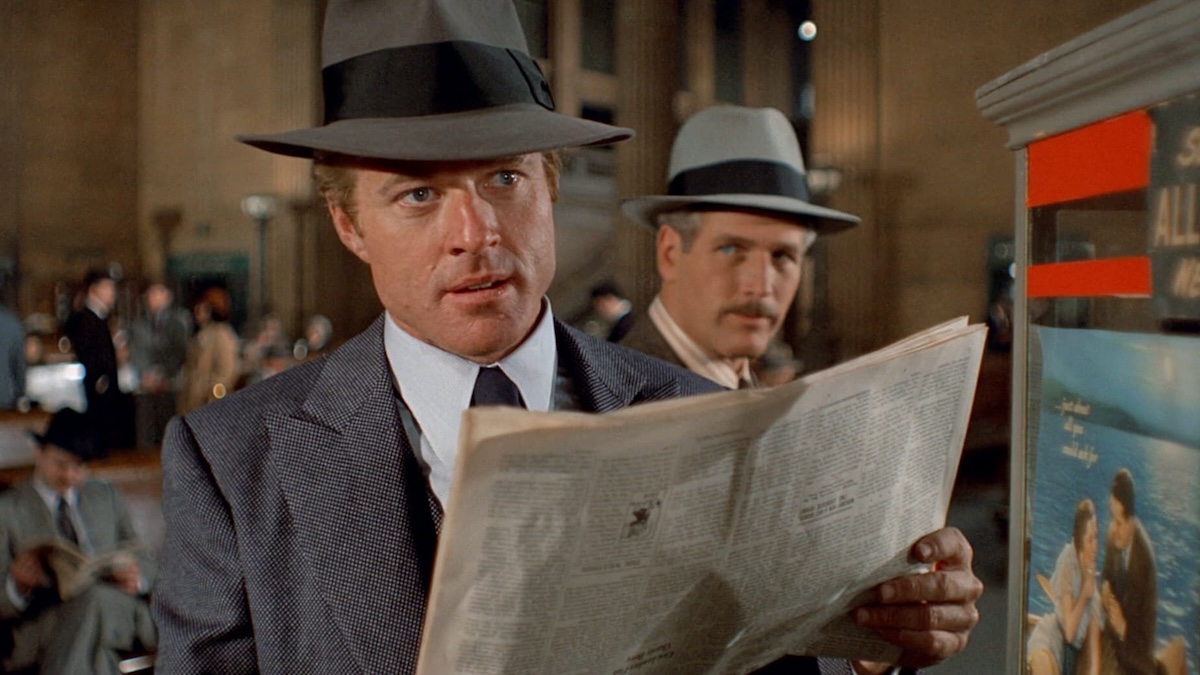
Like any great film—and this one truly is—each character’s introduction is marvellous. Our primary protagonist, the young and cunning Johnny, is presented as a debonair yet scruffy grifter: an angel with a dirty face. He can use his wily cunning to make money, but possesses no understanding of how to manage it; in one night, he squanders a hefty $3,000 in a small casino. To put that into perspective, that would be the equivalent today of losing a little over $70,000 by betting it all on black. Needless to say, Johnny is a self-indulgent spendthrift, utterly incapable of curbing his impulsive desires.
Fortunately for Johnny, he will gain the necessary expertise by serving as Gondorff’s apprentice. If you thought Johnny was wily, then Gondorff is wilier, perhaps even the wiliest of them all. He’s pulled off a few long cons and knows that it’s no easy feat—but when executed masterfully, it can be absolute dynamite. In The Sting, Newman and Redford recapture the electrifying chemistry they shared in Butch Cassidy and the Sundance Kid (1969), also directed by Hill. Through a subtle squint of the eye and an enigmatic smirk, the two actors communicate a wealth of meaning, delivering an acting masterclass. Their subtlety is representative of a style of acting that seems to have faded away, along with films of this calibre.
If there’s an actor in this production who embodies subtlety, it’s Robert Shaw. His portrayal of Doyle Lonnegan is simply sublime. The white-hot fury he communicates with only his narrowed eyes and clenched jaw showcases his remarkable acting skills. It’s ironic that he would star in Jaws (1975) two years later; in this film, he has the face of a shark, his dark pupils containing a universe of calculated menace. While he strives to project an image of a legitimate banker and upstanding citizen, it’s evident that an ebullient temperament simmers beneath the stoic exterior.
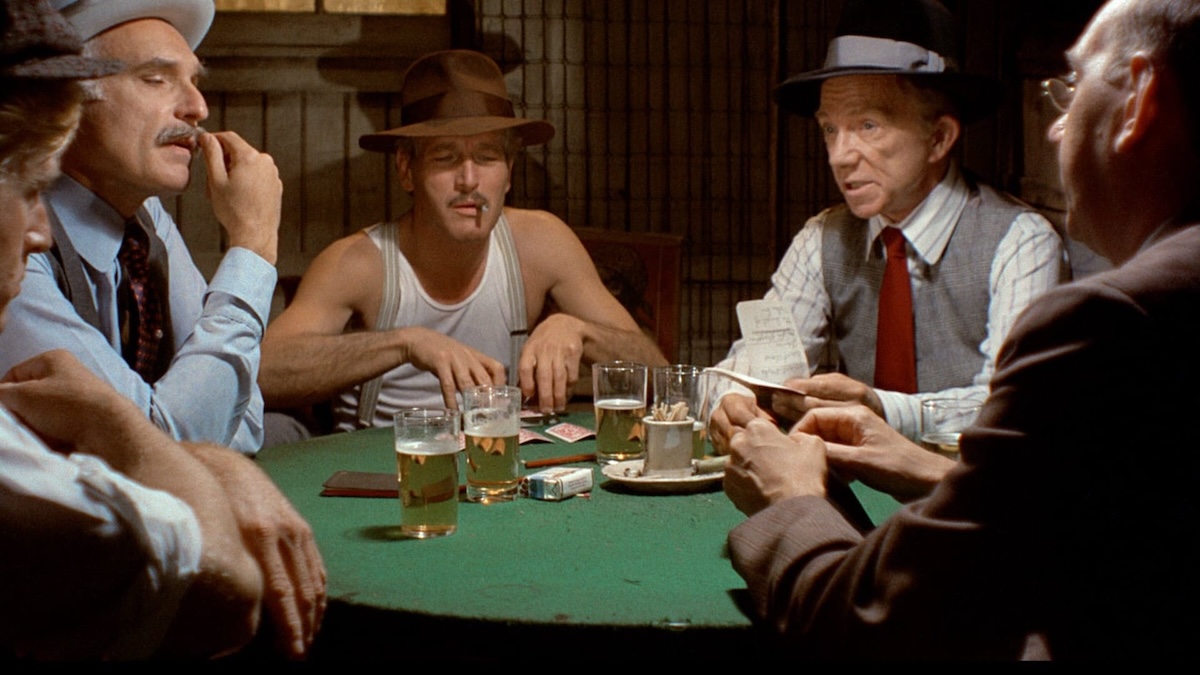
Other performances in this film merit outright commendation. Charles Durning excels as the corrupt, slightly bumbling Lt. William Snyder, while Harold Gould is fantastic as Kid Twist. He seamlessly alternates between a suave and charming demeanour to a bookish and anxious one. He performs with such proficiency that he almost could trick you into believing he’s a different character, even though all he’s done is don those outlandish spectacles. Like the other members of Gondorff’s team, Gould’s range is impeccable; it all depends on the part he needs to play.
The ideology of the film is deeply rooted in the gangster epics that were popular during the time period in which it’s set. The lawmen are corrupt figures who cause more harm than good. They represent a broken system that oppresses the hardworking man. However, it can be argued that the film’s lineage can be traced back even further. Specifically, The Sting bears a striking resemblance to a folk tale, a story akin to the likes of Robin Hood and his band of Merry Men. The characters in The Sting likewise intend to steal from the rich and give to the poor—namely, themselves.
In this, we can see a form of cognitive dissonance rooted in the American Dream. Wealthy people are often portrayed as embodiments of greed and evil, yet the men striving diligently to amass riches are often depicted as upright, salt-of-the-earth figures. They may steal, but only from those who deserve a comeuppance. Their criminality is morally justified as they’re plotting against those who are genuinely as bad. This narrative preserves the shiny veneer of the American Dream as a noble aspiration. Upward mobility is achieved by the many at the expense of the dishonest few, which, in effect, amounts to justice.
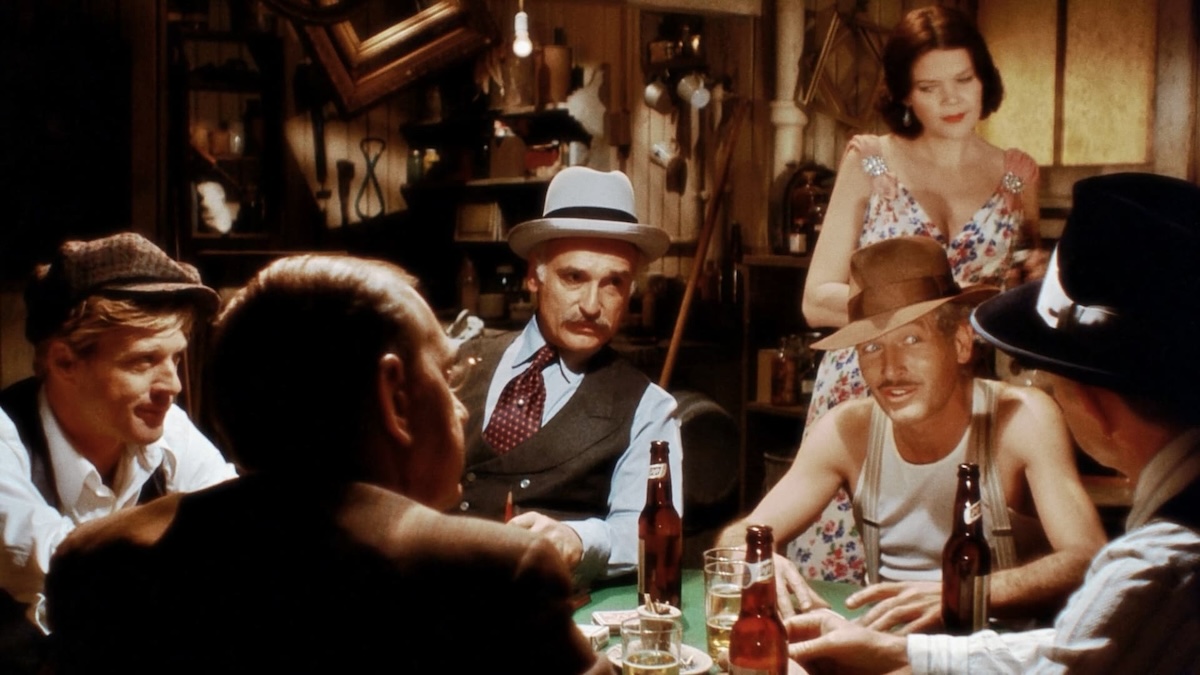
While we are often wary of being scammed in our modern, technologically advanced era, it might seem challenging to elicit our empathy for con artists. However, by depicting these confidence tricksters as everyday people driven more by the desire to avenge their brutally slain friend than by financial gain, Hill adroitly sidesteps any ethical qualms regarding their actions. These are a righteous bunch that stick together through adversity—who wouldn’t want to be part of such a fellowship?
In addition, what makes them especially relatable is the type of masculinity they embody. Henry and Johnny don’t rely on the likes of Robin Hood’s bow or James Cagney’s Tommy gun. None of them exhibit the machismo popularized by 1980s action heroes like Sylvester Stallone, Arnold Schwarzenegger, or even Tom Cruise. Instead, they would rather avoid confrontation if possible, relying on their smarts.
When Johnny and Henry spot Lonnegan from a distance, Johnny observes, “He’s not as tough as he thinks he is.” But Henry swiftly corrects him: “Neither are we.” He doesn’t want Johnny to make the mistake of equating bravery with recklessness; there’s no room for pride in a long con.
One reason why The Sting continues to captivate audiences is its refusal to be confined to any one genre. Moreover, it subtly subverts genre expectations. It’s a revenge film without murder. While all the con artists are driven by a desire for vengeance, as Johnny ruefully observes, “I don’t know enough about killing to kill him.” As a result, there are no gruesome murders akin to those that characterise Park Chan-wook’s revenge trilogy. Instead, they decide to hurt Lonnegan by simultaneously damaging his pride and his wallet. In essence, the characters orchestrate a form of semi-legal murder; they seek to kill Lonnegan by bankrupting him.
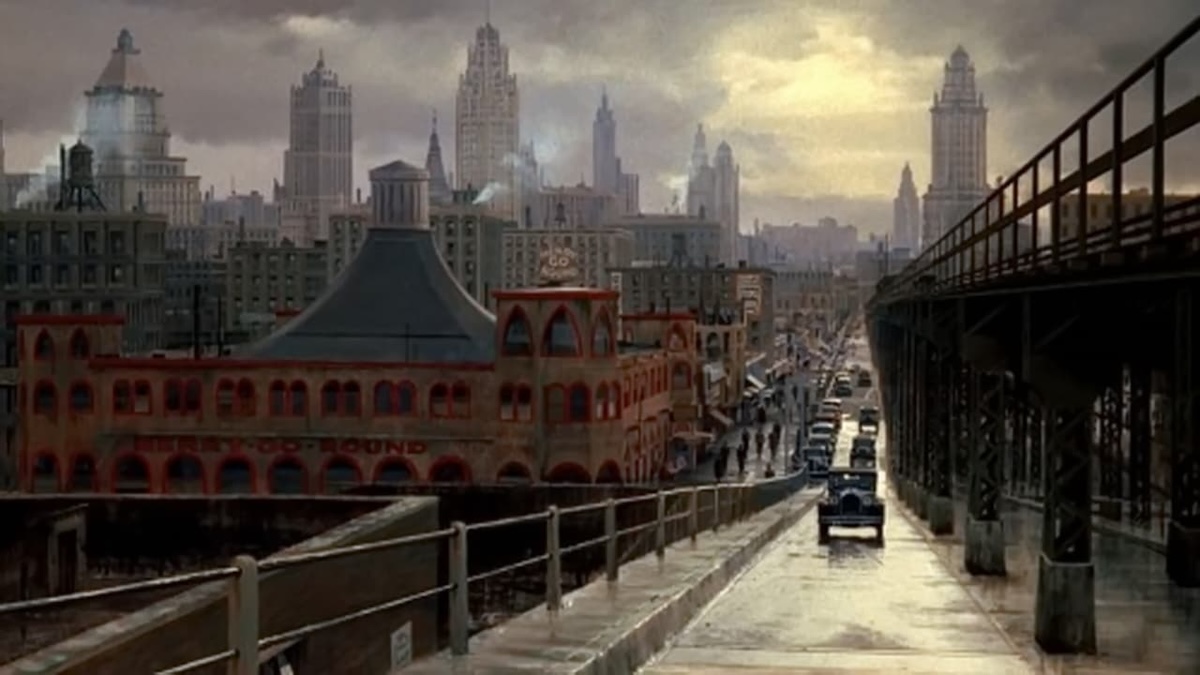
The Sting is also a heist film without a heist. There’s no bank robbery and no hold-up. Instead, Gondorff’s band of Merry Men masquerade at an unsuspecting bank. Like an old, wise fisherman, Gondorff teaches Johnny through the intricacies of luring a large, gullible fish towards them. This is the secret of the long con.
In addition to this, their plan is plausible and never becomes excessively overwrought: anger a rich, unscrupulous man, drive him to desperation for revenge and blind him to the fact that he’s tightening a noose around his neck. Corrupted by greed and wrath, Lonnegan blunders $500,000—the equivalent today of a little over $11M—at a bookie he’s only visited twice. He’s so arrogant that he believes he’s about to drop a massive bomb on Gondorff, failing to see that he’s actually wearing a suicide vest.
The film’s central theme of surface appearances emerges as the best interpretation. These grifters are masters of manipulating your insecurities, leading you to see the picture they desire. All the while, they will allow you to believe it was your own astuteness that guided you. Our self-perception—and the fears connected to it—are meticulously analysed, identified, and exploited. Lonnegan is terrified of being seen as powerless, while also being prone to bouts of rage. As a result, he becomes wrapped up in a con that allows him to feel in control, where anger becomes his dominant emotion. Similarly, Snyder likely harbours concerns about being viewed as incompetent and corrupt—as he’s both in equal measure—and Gondorff’s scheme masterfully exploits this weakness.
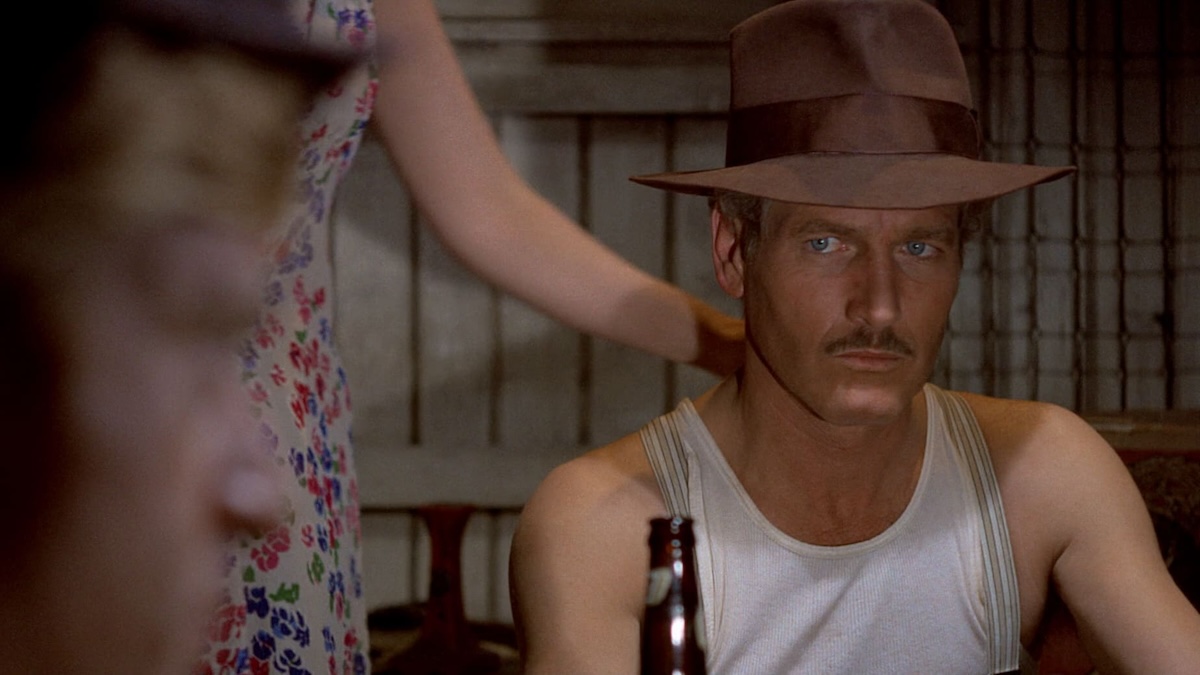
All of this closely mirrors the clever use of filmmaking techniques in The Sting. Just like Lonnegan, we, the audience, are also conned. Believing that we’ve been given the full picture, we’re subtly misled, unaware of the existence of another, more intricate plot unfolding beneath the surface. Upon rewatching the movie, the clever deception becomes painfully obvious. However, that’s precisely the beauty of Hill’s masterful direction. Like a well-crafted riddle, the truth gradually emerges, starting from an obscure state to become crystal clear. The answer’s been right under our noses all along, but we were willingly deceived. Or, to be more precise, we were allowed to deceive ourselves. The film itself becomes a masterful trick, a con within a con within a con. Nothing is as it seems. As a result, it’s a film that remains endlessly rewatchable, with new layers of deception revealing themselves with each viewing.
Upon revisiting this film, you may find yourself struck by the same realisation I did: films of this quality simply aren’t being produced anymore. Perhaps that’s true, and there could be any number of reasons for that. However, it could also be a misinterpretation. The truth is, there are no other films quite like The Sting. It exudes classicism from every pore. Its performances are iconic, its script is wonderful, and its direction masterfully ties everything together, with each constituent part contributing to a cohesive, immaculate whole.
What makes this film most endearing is the camaraderie and sense of community it conveys. It captures the thrill of success and the terror of defeat that comes with their illicit endeavours. Contrary to popular belief, there is honour amongst thieves. Their work is imbued with a mix of pride and humility, and much like the film itself, their con becomes a work of art. And it’s still hard work too, but somebody’s got to do it.
USA | 1973 | 129 MINUTES | 1.85:1 | COLOUR | ENGLISH

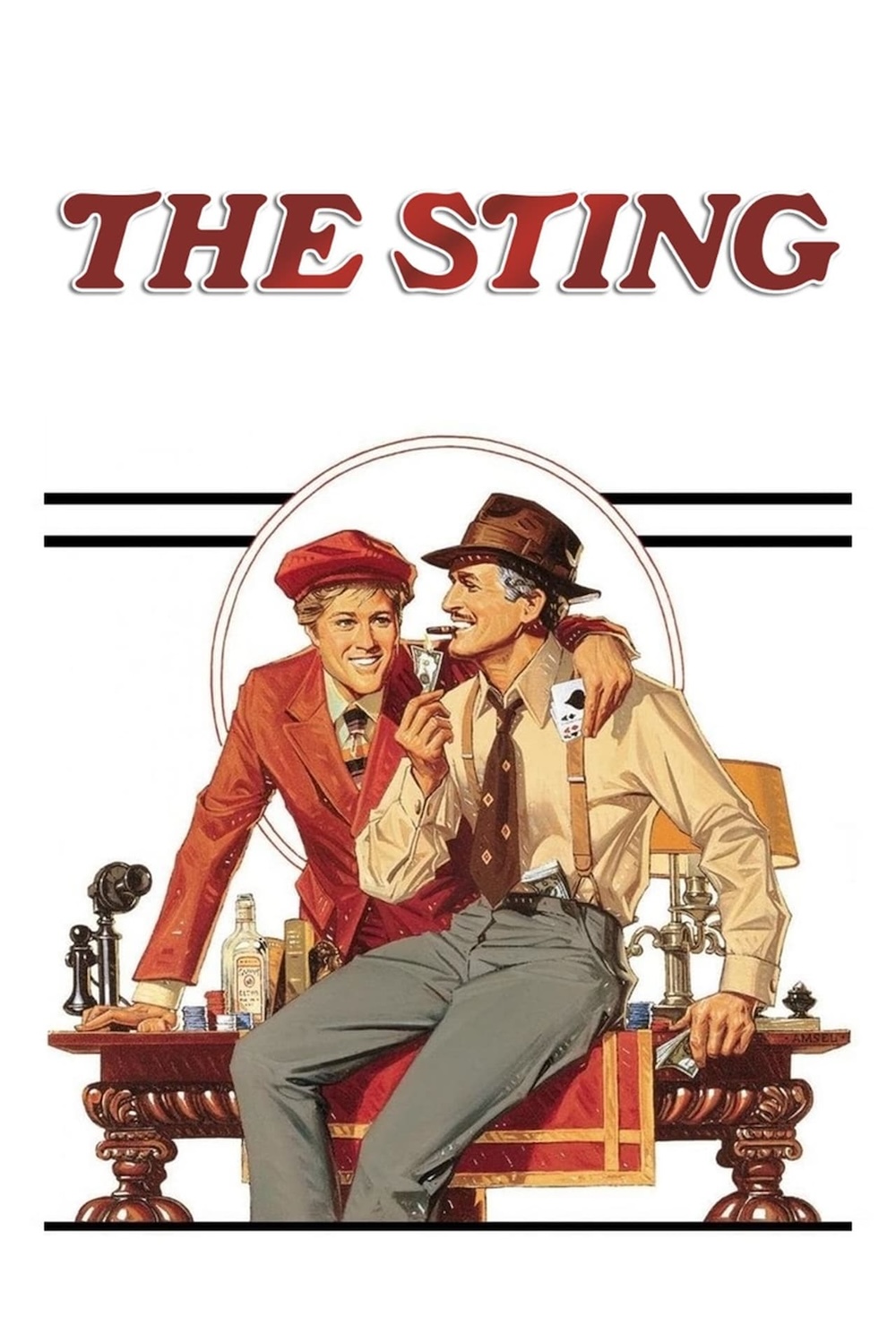
director: George Roy Hill.
writer: David S. Ward.
starring: Paul Newman, Robert Redford, Robert Shaw, Charles Durning, Charles Dierkop & Harold Gould.
